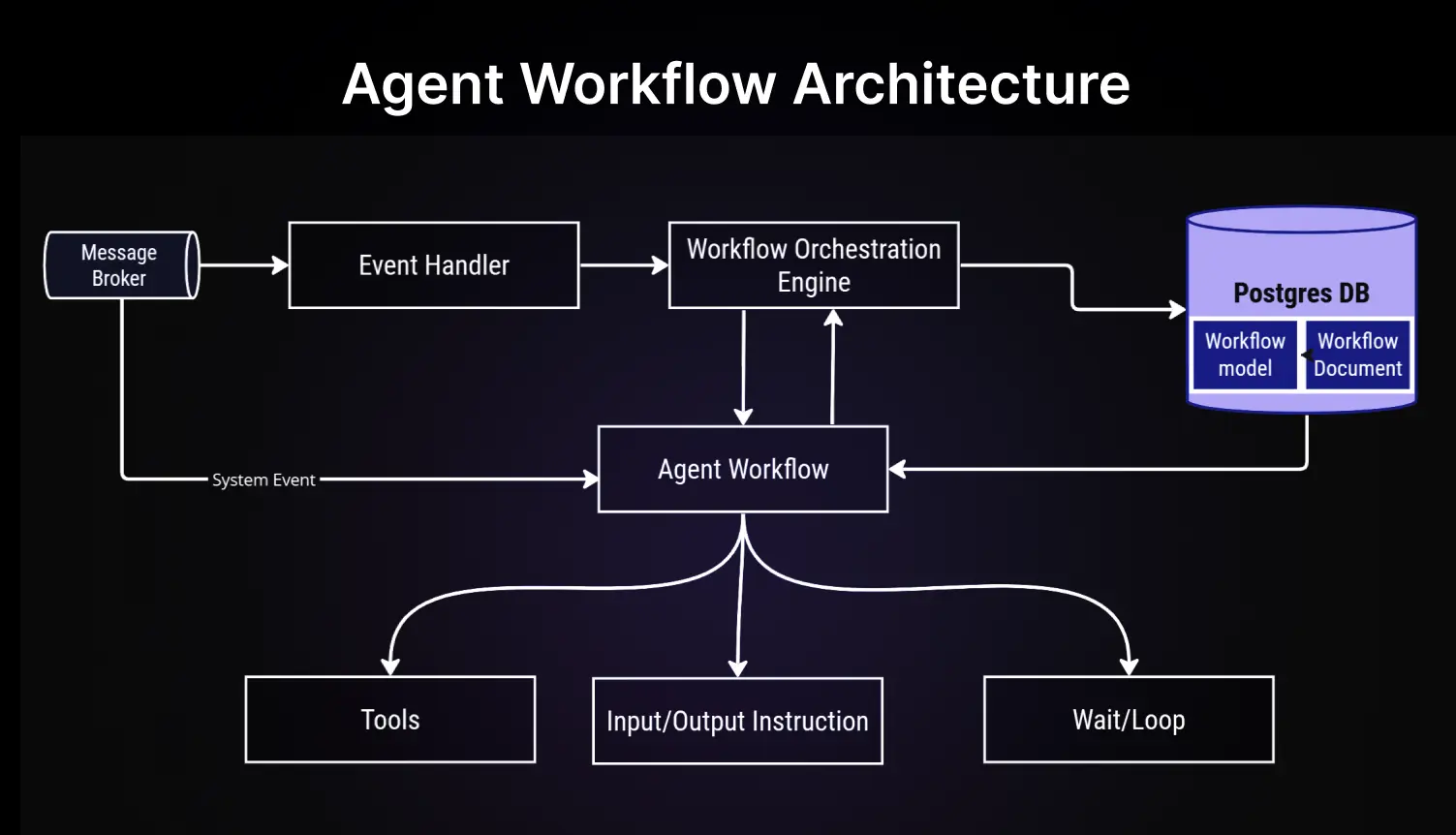
1. The Starting Point: Message Broker
- Message Broker: Often regarded as the unsung hero of distributed systems, a Message Broker manages communication between different applications. It receives messages, decides where to send them, and ensures their delivery. This way, systems remain decoupled, yet still communicate effectively.
2. Event Handling: The Bridge to Actions
- Event Handler: Upon receipt of messages from the Message Broker, the Event Handler comes into play. Think of it as a gatekeeper, deciphering the nature of the incoming messages (or system events) and triggering appropriate workflows based on their content and context.
3. Orchestrating the Symphony: Workflow Orchestration Engine
- Workflow Orchestration Engine: This is the maestro of the system. It determines how different components and processes need to interact with each other. Through this engine, the tasks are mapped out, dependencies identified, and the sequence of operations established.
4. The Workhorse: Agent Workflow
- Agent Workflow: An integral part of the system, this is where tasks are executed. Depending on the event and instructions from the Workflow Orchestration Engine, the Agent Workflow carries out operations, be it computations, data manipulations, or any other task.
5. The Repository: Postgres DB
- Postgres DB: Acting as the system’s memory, this relational database stores the Workflow Model (the blueprint of how workflows are structured) and the Workflow Document (potentially a detailed record or log of each workflow instance). Having this centralized storage ensures that workflows can be audited, repeated, or improved upon in future iterations.
6. Auxiliary Components: Tools & Instructions
-
Tools: These are specialized modules or utilities that the Agent Workflow can leverage. Whether it’s a calculator, a data parser, or a connection to an external API, these tools extend the capabilities of the Agent Workflow.
-
Input/Output Instruction: Here, the workflow might receive further input or produce output. It could be anything from user input to the result of a computation.
7. Patiently Waiting: Wait/Loop
- Wait/Loop: Not all operations are instantaneous. Sometimes, the workflow might need to pause — either waiting for an external input, a specific condition to be met, or simply a time delay. This component ensures the system can handle such pauses efficiently without stalling the entire operation.